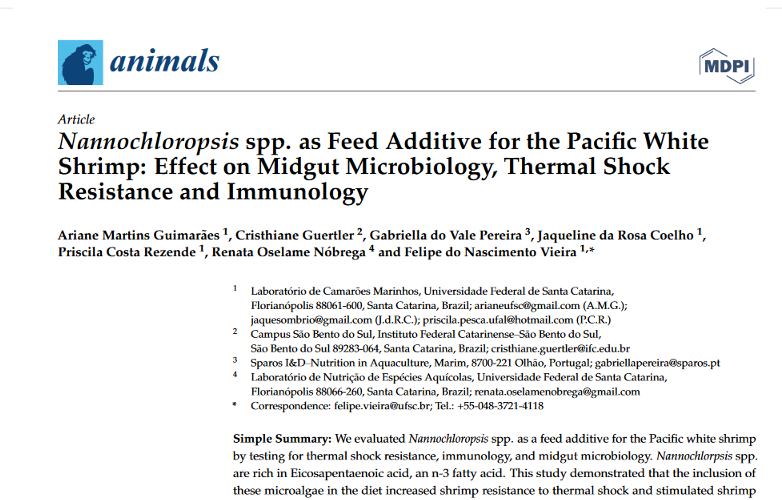Ariane Martins Guimarães, Cristhiane Guertler, Gabriella do Vale Pereira, Jaqueline da Rosa Coelho, Priscila Costa Rezende, Renata Oselame Nóbrega, Felipe do Nascimento Vieira
https://doi.org/10.1016/j.aqrep.2020.100479
Abstract
The biofloc culture system (BFT) allows for the production of aquatic animals at higher stocking densities compared to conventional aquaculture systems and it has been proven to be efficient for shrimp (Litopenaeus vannamei) and mullet (Mugil liza) rearing. Accumulation of nutrients enhances the natural productivity of the system, thus the concentration of total suspended solids (TSS) tends to accumulate during the production cycle, which can deteriorate the water quality and performance of the animals produced. Integrated multi trophic aquaculture (IMTA) can be performed in single or multi tank systems, depending on the interaction of the different species being cultured. The present study aimed to reduce TSS concentration by integrating juvenile mullet into a shrimp BFT system, through the consumption of these solids by the mullet. Three different treatments were used: shrimp monoculture (MONO), single tank (SING -shrimp and mullet cultured in the same tank) and IMTA multi tank (MULT- shrimp and mullet cultured in different tanks). The performance of shrimp was impaired in the SING treatment, while mullet had their best zootechnical performance in this treatment. The presence of the fish modified the nitrification even with the use of biofloc inoculum. The presence of mullet, regardless of the IMTA system used, resulted in lower biofloc concentrations, compared to the monoculture of shrimp, thus confirming that mullet can be used to control solids concentrations originating from shrimp production in a BFT system.




